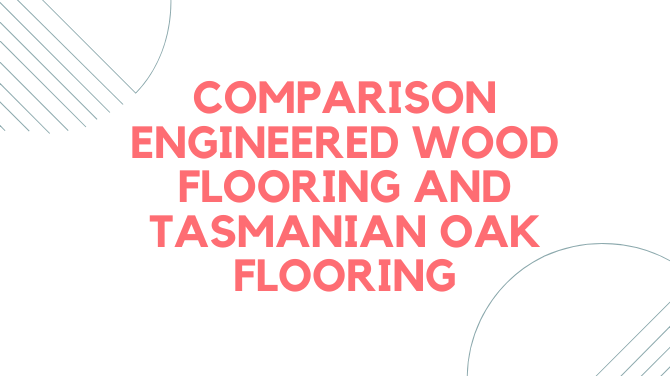Timber is a popular flooring material that stands the test of time. When selecting the right flooring for your home, two popular options are Engineered Wood Flooring and Tasmanian Oak Flooring. Both have unique advantages and appeal to different needs. This blog will break down their key differences to help you make the best choice for your flooring project.
1. Material Composition
Engineered Wood Flooring consists of multiple layers of wood, pressed together to create a durable and stable product. The top layer is a thin veneer of real hardwood, while the core is made of plywood or high-density fiberboard (HDF). This construction enhances stability and moisture resistance.
Tasmanian Oak Flooring, on the other hand, is a solid hardwood made from a single piece of Tasmanian oak. Sourced from trees native to Tasmania, it is known for its light, creamy color and attractive grain patterns. As a solid wood, Tasmanian oak offers natural beauty and long-term durability.
2. Durability
Both flooring options are durable, but they perform differently in various environments.
Engineered Wood Flooring is more stable in environments with fluctuating temperatures or humidity levels. The layered structure prevents warping, making it ideal for areas like kitchens and basements. However, its top veneer limits the number of times it can be refinished, depending on the thickness.
Tasmanian Oak Flooring is a solid hardwood, allowing for multiple refinishing over its lifetime. It can last for decades with proper care, but it is more sensitive to moisture and temperature changes, which can cause expansion or contraction.
3. Moisture Resistance
When moisture is a concern, Engineered Wood Flooring has the upper hand. Its layered construction resists warping and buckling, making it suitable for damp environments like bathrooms or basements. Although not waterproof, it offers better protection against moisture than solid wood.
Tasmanian Oak Flooring, being solid wood, is more vulnerable to water damage. Excess moisture can cause the wood to swell or warp, so it’s best used in dry areas such as living rooms or bedrooms. Regular maintenance and proper sealing are necessary to protect it from moisture-related issues.
4. Installation Process
Engineered Wood Flooring is easier to install and offers more flexibility. It can be installed using various methods like floating, glue-down, or click-and-lock systems, and it can be placed over different subfloors, including concrete. This makes it a good option for DIY installations.
Tasmanian Oak Flooring, on the other hand, requires a more traditional installation process. It is typically nailed or glued down to a wooden subfloor. Professional installation is recommended to ensure the best results, and the wood may need to acclimate to the room’s humidity before installation.
5. Aesthetic Appeal
Both flooring types offer stunning visual appeal but differ in versatility.
Engineered Wood Flooring offers a wide variety of finishes, textures, and wood species, including options that mimic the look of Tasmanian oak. Whether you prefer a rustic, hand-scraped look or a sleek, modern finish, engineered wood provides endless options.
Tasmanian Oak Flooring, with its natural creamy hues and subtle grain patterns, offers a timeless beauty that adds warmth and sophistication to any space. Its natural elegance is highly sought after by homeowners looking for a classic, premium finish.
6. Cost Comparison
In general, Engineered Wood Flooring is more affordable than solid hardwood options, including Tasmanian oak. The cost depends on the quality of the veneer and the core materials used. Its lower price, combined with durability and easy installation, makes it a cost-effective choice for many homeowners.
Tasmanian Oak Flooring is more expensive because it is a solid hardwood. However, its long lifespan and ability to be refinished multiple times make it a worthwhile investment for those seeking natural beauty and long-term durability.
7. Environmental Impact
From an environmental perspective, Engineered Wood Flooring can be more sustainable because it uses less solid wood. The core layers are often made from fast-growing, renewable materials like plywood or HDF, while only a thin layer of hardwood is used for the surface. However, the manufacturing process involves adhesives, which can raise environmental concerns.
Tasmanian Oak Flooring is a natural, renewable resource when sourced from sustainable forests. As a solid hardwood, it requires more timber, but its long lifespan and ability to be refinished make it an eco-friendly option over time.
Final Words
Choosing between Engineered Wood Flooring and Tasmanian Oak Flooring comes down to your specific needs. Engineered wood offers more flexibility, better moisture resistance, and affordability, making it ideal for high-traffic or humid areas.
On the other hand, Tasmanian oak provides the classic beauty and durability of solid hardwood, making it perfect for homeowners seeking a premium, long-lasting finish. Consider your home’s environment, budget, and aesthetic preferences to select the flooring option that best suits your needs.









